Struggling with a PCL injury that’s holding you back on the football pitch?
Discover our specialized PCL injury rehabilitation program at Personal Training Master, designed to help footballers like you recover faster and get back to your best performance.
You must have heard the famous line that says “Excess of everything is bad”.
We find this saying very relevant when we look at our bodies’ structure.
Excessive movement in our joints is bad for our bodies as it can compromise stability and disturb body mechanics.
- But did you know that this excessive movement at our joints is prevented by special band-like structures in our body called ligaments?
These ligaments keep the joints stable and prevent unwanted movements.
The knee joint is one of the most susceptible joints to injury in footballers because of the stress placed on it during this game.
And did you know there are four main ligaments that provide support to the knee joint?
These ligaments are:
- Anterior Cruciate Ligament (ACL)
- Posterior Cruciate Ligament (PCL)
- Medial Collateral Ligament (MCL), and
- Lateral Collateral Ligament (LCL).
Each of these ligaments prevents excessive movement of shin or thigh bone in a particular direction.
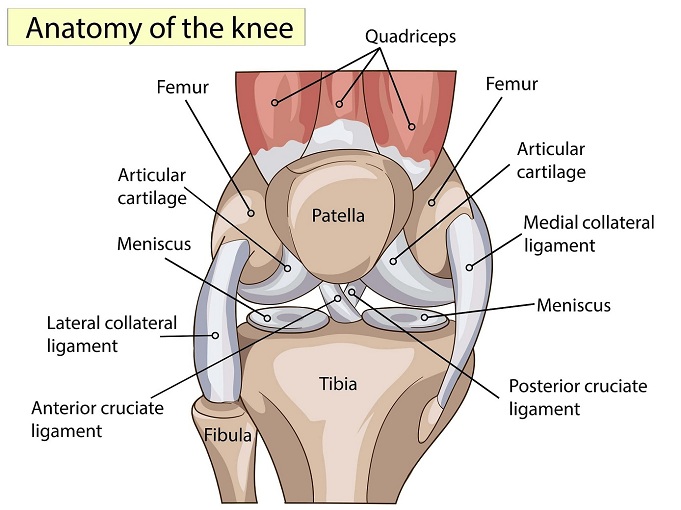 Posterior Cruciate Ligament (PCL) prevents excessive backward movement of your shin bone and if injured, can compromise the knee joint’s stability.
Posterior Cruciate Ligament (PCL) prevents excessive backward movement of your shin bone and if injured, can compromise the knee joint’s stability.
In this article, I will have a closer look at the PCL injury football players sustain and how PCL injury rehab can maximise footballers’ performance.
Function of PCL and loads placed in Football
The major function of PCL is to hold your shin bone stable in relation to the thigh bone and it does not let the shin bone go excessively backward.
In other words, PCL ligament prevents excessive backward translation of tibia (shin bone) over femur (thigh bone). (1)
To better understand it, think about a seatbelt that holds your body in place while driving.
It does not let your body move excessively forward in case of any collision.
In the same way, PCL keeps your shin and thigh bone in place and does not let your shin bone go excessively backward.
Football requires a variety of movements of your legs, and that’s why considerable stress is placed on your knee joint and its ligaments.
PCL injuries are not as common as ACL injuries in football but they can occur depending upon the mechanics of the injury. PCL injury can occur either because of direct contact or non-contact mechanisms.
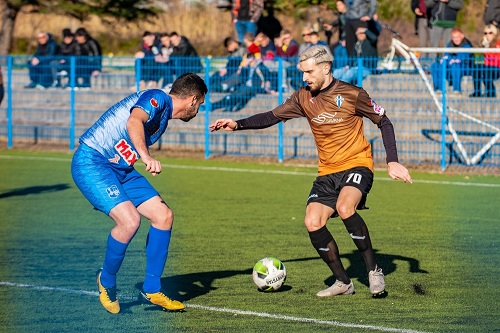
The PCL injury football players suffer from causes a decline in their performance levels. There is a considerable amount of stress and load on the footballers’ knees, especially in the first half of the game.
Think about how often footballers make sudden twists and turns while running and sprinting.
Therefore, once a person is injured, a PCL rehab following an injury or PCL reconstruction is necessary for performing smoothly in this game.
What are the Causes and Symptoms of PCL Injury in Footballers
All of us know that damage to a supporting structure of our body compromises stability.
That is exactly what happens to the knee joint stability of a football player when their PCL is injured.
The PCL injury football player suffers from is one of the main causes of knee instability among footballers.
There are two main causes of PCL injury football players encounter while playing the game i.e.
- direct blow to footballer’s knee or
- indirect stress placed on the PCL.
If an excessive force is placed on your shin bone (tibia) pushing it in a backward direction, it causes PCL to injure.
A forceful blow at the front or anterior side of the footballer’s leg (shin bone) with their knee bent/flexed can cause PCL injury.
You must have seen it in this game.
Depending upon the injury mechanics, PCL injury can be isolated or other ligaments of the knee joint can be injured as well.
If a football player falls on the ground with their knee bent, the stress is placed on the PCL and injury can occur.
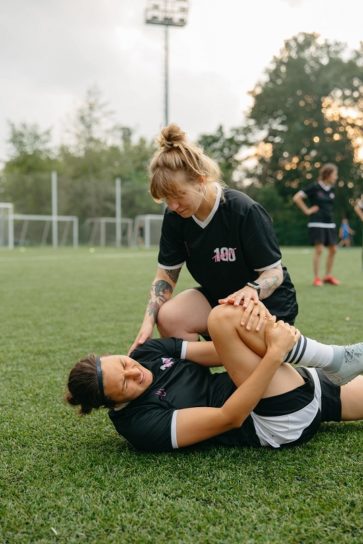 Another cause of PCL injury among footballers is the sudden unexpected and violent bending on the knee (hyper-flexion) joint. (2)
Another cause of PCL injury among footballers is the sudden unexpected and violent bending on the knee (hyper-flexion) joint. (2)
Whatever the mechanism is, if your PCL is injured, the stability of your knee joint is compromised and PCL rehab is crucial for achieving better outcomes.
- Have you recently injured your ligament and struggling with pain?
- Are you uncertain whether PCL rehab can help or not?
Find out how to address this injury starting now with your FREE ONLINE CONSULTATION with the Best PCL Rehabilitation Trainer in London, Jazz Alessi.
Symptoms of PCL injury among Footballers
Being a professional or seasonal footballer, you must know that all injury symptoms depend upon the severity of the injury.
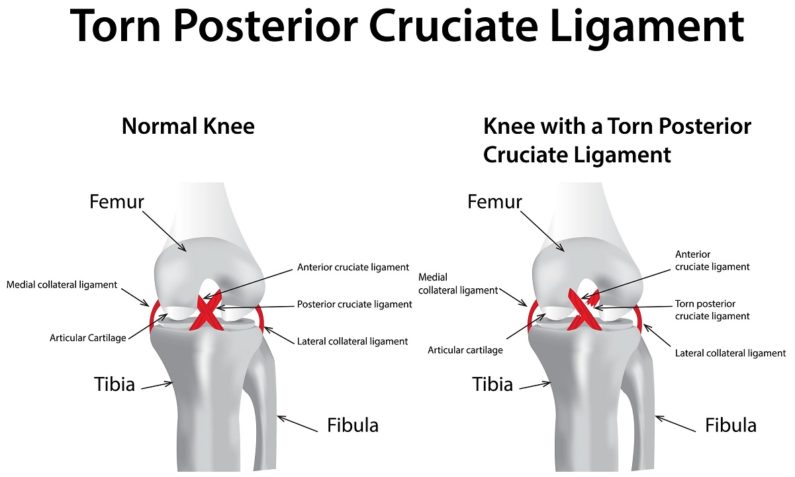 The isolated PCL injury football players commonly encounter is classified into three categories.
The isolated PCL injury football players commonly encounter is classified into three categories.
- Grade 1 Injury: Stretching of PCL with some micro-damage.
- Grade 2 Injury: There is macroscopic tear of PCL but some part of the ligament is intact.
- Grade 3 Injury: There is complete rupture of PCL and the ligament is divided into two parts.
A number of clients I encounter ask “What does a PCL injury feel like?”
The most common symptoms of PCL injury football enthusiasts suffer from are as follows.
- Pain at the backside of knee joint (Intensity varies from mild to severe).
- Swelling around the knee joint (most commonly at the backside)
- Feeling of instability when the knee is in the bent position.
- Difficulty maintaining balance during running and changing directions.
- Feeling of knee moving excessively in the backward direction.
- Decreased knee range of motion
The PCL injury symptoms are not limited to the above-mentioned symptoms and can vary from person to person.
The swelling is not usually seen immediately after the injury but if blood vessels are affected, the joint can show swelling immediately.
- As the majority of our weight is placed on the knees, therefore; knee injuries should be addressed as early as possible.
- Do you have any of the PCL injury symptoms mentioned above?
For your info, rehabilitation following PCL knee injury provides a successful return to sport if a customised PCL rehab is employed.
Jazz Alessi is a long-term elite exercise specialist and one if not the Best PCL Rehabilitation Trainer in London and you can book your FREE ONLINE CONSULTATION now to discuss your PCL rehab.
Can you play football with a PCL injury?
This is the most frequent question asked by football players.
The first and foremost complaint following a ligament injury is pain.
Though pain is a protective mechanism in our body, a footballer cannot give their best if they are struggling with knee pain in the most important joint of a football player i.e., the Knee joint.
Even if the pain is subsided using some medications or other means, the subsequent drastic effect a PCL injury football player sustains is the instability of the knee joint.
- And how can a footballer perform well if their knee joint’s stability is compromised together with unbearable pain?
If you continue to play football with PCL injury, the other supporting ligaments of your knee joint i.e., ACL, MCL and LCL will get weak gradually and chances of their injury are increased.
Would a footballer like to compromise their knee joint’s stability and efficiency by damaging the important ligaments?
Obviously not.
Due to your knee injury severity, body type, gender, weight levels, goals you are targeting, dominant side, body segments proportions, age and pre-injury skills the PCL knee injury recovery time varies from player to player therefore, there is no exact number of weeks necessary for PCL rehab.
The duration of your knee rehab is evidence-based therefore, is determined during your consultation.
- Are you also suffering from knee joint stability following a direct blow to your knee?
- Is your performance constantly declining even after continuous struggle?
Book your FREE ONLINE CONSULTATION with Jazz Alessi to discuss measures that can be taken and rehab customisations to maximise your knee health and boost football performance.
Stats related to PCL Injury
PCL injury is not as much common as ACL injury (3) among footballers.
According to epidemiological data on PCL injuries over 17 seasons in men’s professional soccer, the overall incidence for PCL injuries was 0.01/1000, meaning that a team can expect to have 0.06 PCL injuries a season, i.e., one PCL injury every 17th season. (4)
According to another source, PCL injuries make up less than 20% of all knee ligament injuries. (5)
One study reported that three percent of the football players presented with a PCL injury.
The major responsible factors of PCL injury football players sustained were either running backward or a blow by another player. (6)
As this injury is not much common, it is possible for some PCL tears to go undiagnosed for weeks or even years (7) but it can compromise a player’s performance.
That’s why it is important to diagnose a PCL injury correctly and start PCL rehab as early as possible.
PCL injury playing football
Since this article is all about PCL injury and football, how can we forget about discussing PCL injury playing football?
PCL is most commonly injured during football games when there is a forceful blow at the shin bone, pushing it in the backward direction.
PCL can also be injured when a footballer strikes their knee with the ground while the leg is bent.
One other scenario that can cause PCL injury is sudden excessive bending movement at the knee joint.
Some of these famous athletes with pcl tears are also discussed here.
In 2017, famous footballer Zlatan Ibrahimovic suffered from a knee injury that damaged his PCL along with ACL.
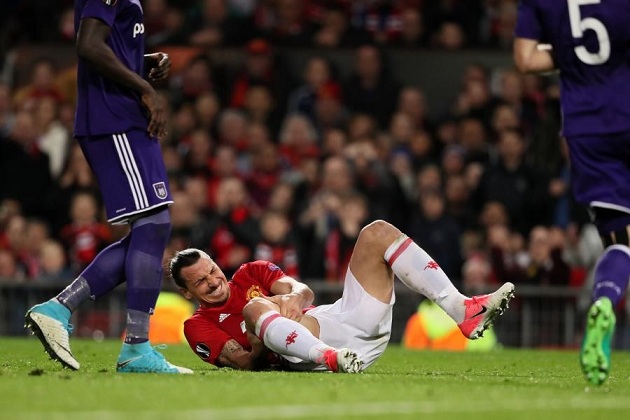
He remained out of the field for some months.
Injuries to ligaments are common in sports and the thing that matters the most is the rehabilitation following the injury.
PCL rehab is the key that determines a player’s return to the field both faster and safe.
Treatment Options for PCL Injuries
Footballers usually get very worried when they hear that their PCL is injured and there are lot of questions that start popping up in players’ minds.
- Will I be able to recover from PCL injury?
- Will there be a need of PCL reconstruction?
- Is PCL reconstruction the only choice?
But…
The most common question I have faced is “What Treatment Options Exist for a PCL Injury for Football Player?”
There’s no need to worry as Jazz Alessi can provide long-term tested PCL rehab options for your PCL treatment and boost your performance.
Most of the PCL injuries playing football are of Grade 1 and Grade 2 and they can be managed successfully by creating a laser-sharp customised PCL rehab programme.
Grade 3 injuries of PCL result in two pieces of this ligament and they need surgical intervention.
The non-operative management of PCL consists of Individualized PCL Rehabilitation Programmes.
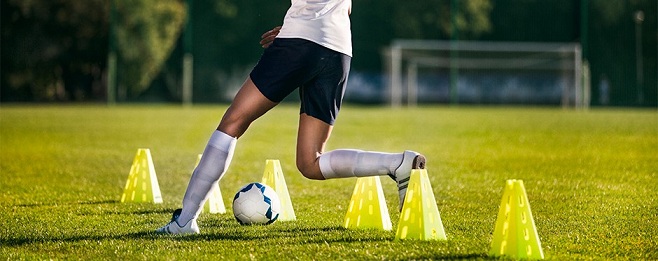 The surgical treatment options for PCL injuries include PCL reconstruction surgeries followed by an Individualised PCL Rehabilitation programme.
The surgical treatment options for PCL injuries include PCL reconstruction surgeries followed by an Individualised PCL Rehabilitation programme.
But there’s a good part.
What’s that?
Grade 3 PCL injuries are not much common among footballers.
If your PCL is somehow injured and you are having its symptoms, you can either opt for a PCL reconstruction surgery or a conservative approach.
- Are you worried about opting for PCL reconstruction for your PCL injury?
- You can clear your confusion from a Long-term Exercise Specialist having expertise in PCL reconstruction rehab and that too for FREE?
Book your FREE ONLINE CONSULTATION now.
Customised PCL rehabilitation in football
Knee rehabilitation is important, no matter which ligament or muscle in injured in your leg. Therefore, rehabilitation plays a crucial role in successfully returning to the sport and even competing at a high level after a footballer sustains an ACL or PCL injury.
A rehabilitation programme, when it is properly designed, can bulletproof your knee faster and it will accelerate the healing speed of injured PCL therefore, it ultimately puts the player back on the field as early as possible.
But what does “Laser Sharp Customised” means?
In case you do not know about my unique rehab approach, I explain rehab customisation for you at this link here.
When you go shopping, do you purchase clothes irrespective of their sizes?
Obviously not.
You first try these clothes and make sure that they fit according to your body size.
The same is true for the rehabilitation programmes for PCL injuries.
A pre-designed rehabilitation programme for PCL injuries among footballers cannot be applied to a footballer like you (just like the clothes).
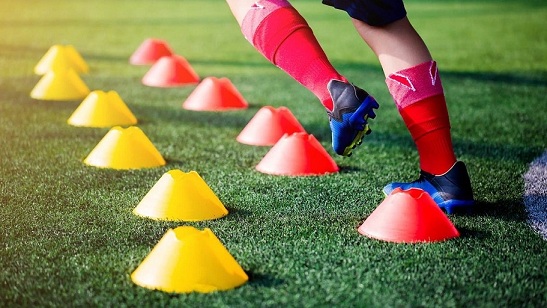 A customised rehabilitation programme is designed keeping in view the uniqueness of your body and is tailored according to the body’s needs.
A customised rehabilitation programme is designed keeping in view the uniqueness of your body and is tailored according to the body’s needs.
A customised rehabilitation programme fits you like a glove therefore, not only helps you in speedy recovery but also in a safe manner boosts your athletic performance levels.
11 Important tips to Avoid PCL Tear for Football Players
Rehabilitation is an art and I’m an artist.
I trained various athletes having PCL and other ligaments’ injuries, and that’s why my long-term ligaments’ rehab expertise in London is unmatched in this area.
Here are eleven golden tips that will help you to avoid PCL tear football players struggle with.
- Focus on complete body warm-up before and after the game.
- Carefully learn jumping and landing techniques.
- Focus on your knee balance during landing.
- As you plan to make a turn, crouch and bend your knees.
This can help to reduce the stress on your PCL
- Perform balance training exercises on daily basis.
Most football players focus on strength and endurance training and forget this most important component of training.
- Wear proper footwear.
- Take care of hydration and drink fluids on regular basis.
- Perform flexibility and stretching exercises.
- Condition your body smartly taking into account your current state, challenges and goals
- Maximise your core
- Don’t ignore your upper body strength.
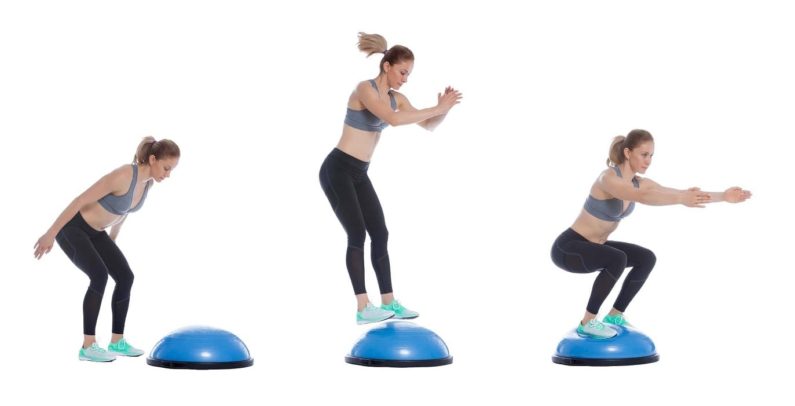
Who is Jazz Alessi?
You must be wondering how I know all this PCL rehab technical stuff in such details.
The reason is that I have been dealing with athletes struggling with knee pain rehab for more than 20 years.
That’s the reason why my rehabilitation programmes are always and 100% customised according to the individual’s needs.
Therefore, they bring out the best possible results for your knee rehab customised goals.
Being an athlete myself, I know the pain of being not on the field for months.
I’m determined to give my entire effort to bring out the best of you and speed up your recovery process.
Here are some of my top qualities.
- I am the only long-term knee rehab expert working at elite level in London
- I am an elite personal trainer in London and rehab trainer with more than 20 years of experience in this field.
- I have experience of working with athletes participating in Olympics and marathons, MMA and UFC fighters, football and tennis players, celebrities, bankers, and the list goes on.
- I am also a 2nd generation Pilates instructor – 2nd specialisation in rehabilitation.
- I am also certified in Nutrition and my expertise is highly sought by some of the best organisations in UK, like CMS Cameron Mckenna and London School of Economics (LSE).
If you also want rehab fast and in a straight line and benefit from this unique expertise, book your FREE ONLINE CONSULTATION now with Jazz Alessi.
References
- Kisner C, Colby LA, Borstad J. Therapeutic exercise: foundations and techniques: Fa Davis; 2017.
https://books.google.com.pk/books?hl=en&lr=&id=yZc6DwAAQBAJ&oi=fnd&pg=PR1&dq=Kisner+C,+Colby+LA,+Borstad+J.+Therapeutic+exercise:+foundations+and+techniques:+Fa+Davis%3B+2017.&ots=Nft4IZhGS9&sig=-MbR1-
- Schulz M, Russe K, Weiler A, Eichhorn H, Strobel M. Epidemiology of posterior cruciate ligament injuries. Archives of orthopaedic and trauma surgery. 2003;123(4):186-91.
https://link.springer.com/article/10.1007/s00402-002-0471-y
- Vaquero-Picado A, Rodríguez-Merchán EC. Isolated posterior cruciate ligament tears: an update of management. EFORT Open Reviews. 2017;2(4):89-96.
https://eor.bioscientifica.com/view/journals/eor/2/4/2058-5241.2.160009.xml
- Lundblad M, Hägglund M, Thomeé C, Senorski EH, Ekstrand J, Karlsson J, et al. Epidemiological data on LCL and PCL injuries over 17 seasons in men’s professional soccer: the UEFA elite club injury study. Open access journal of sports medicine. 2020;11:105.
https://www.ncbi.nlm.nih.gov/pmc/articles/PMC7231769/
- Schüttler K, Ziring E, Ruchholtz S, Efe T. Verletzungen des hinteren Kreuzbands. Der Unfallchirurg. 2017;120(1):55-68.
https://link.springer.com/article/10.1007/s00113-016-0292-z
- Logan CA, Beaulieu-Jones BR, Sanchez G, Chahla J, Kennedy NI, Cinque ME, et al. Posterior cruciate ligament injuries of the knee at the National Football League Combine: an imaging and epidemiology study. Arthroscopy: The Journal of Arthroscopic & Related Surgery. 2018;34(3):681-6.
https://www.sciencedirect.com/science/article/abs/pii/S0749806317311635
- Lee BK, Nam SW. Rupture of posterior cruciate ligament: diagnosis and treatment principles. Knee surgery & related research. 2011;23(3):135.
https://www.ncbi.nlm.nih.gov/pmc/articles/PMC3341837/
Disclaimer: This website and all its content is to be used for information purposes only. This website or any of its content or links to third parties does not diagnose, advise, treat or cure any ailments, illness or disease.
You agree to hold harmless the owner of this site for any action taken on your own without consulting your medical doctor first by using the information on the website for diagnostic, treatment, or any other related purposes. This is not medical advice. If you are suffering from any illness, disease or ailments please contact your doctor first and immediately.



Comment 1